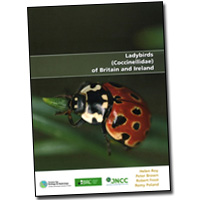
Some ladybird species in the UK are struggling in the face of alien bugs and insects, although a handful have seen their numbers increase.
The findings come from a detailed analysis of ladybird observations that have been compiled into a book, the Ladybird Atlas of Britain and Ireland, which includes distribution maps.
The new publication maps all 47 species of ladybirds in Britain and Ireland, building on thousands of observations from volunteer recorders.
The earliest record in the atlas is that of the rare 13-spot ladybird, recorded near Oxford in 1819.
The most commonly recorded species, with 27,000 records, is the 7-spot ladybird, closely followed by the newly arrived harlequin ladybird with over 25,000 records.
Declining species include the 14-spot and 10-spot ladybirds, which are principally aphid feeding ladybirds coveted by gardeners.
Species doing well, and expanding their geographical range, include the pine ladybird and the mildew-feeding orange ladybird. In the past the orange ladybird was a rare species.
However it has thrived in recent years, partly by adapting to life on additional types of tree.
One of the authors of the atlas, Dr Helen Roy from the Centre for Ecology & Hydrology, said: “The atlas data enable us to address many key questions on the fascinating life histories of our 47 ladybird species.
“As well as being charismatic and popular insects, ladybirds have an important role as indicators of our changing environment.
“Ladybird interactions with natural enemies, particularly parasites, are intriguing and we hope that this atlas will encourage further recording of both ladybirds and also the natural enemies associated with them.”
The atlas can be ordered via all good bookshops or purchased directly from the Centre for Ecology & Hydrology.
Source: Landscape Juice – Atlas maps ladybirds across UK and Ireland






